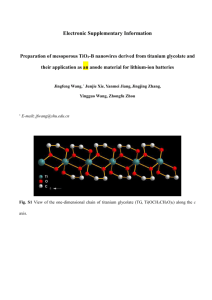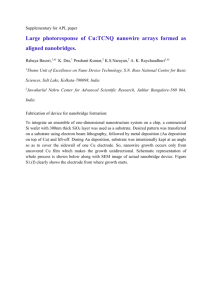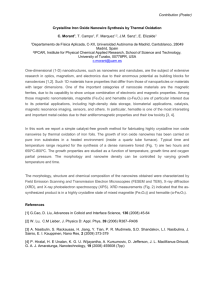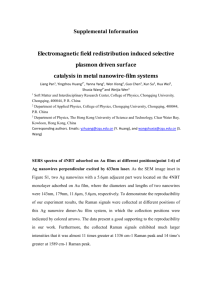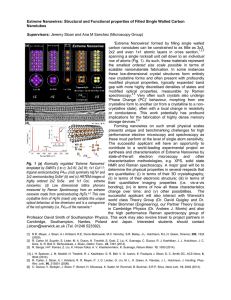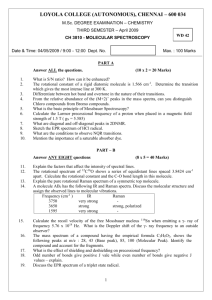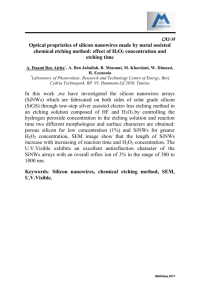Alignment and Characterization of Semiconduting Nanowires
advertisement
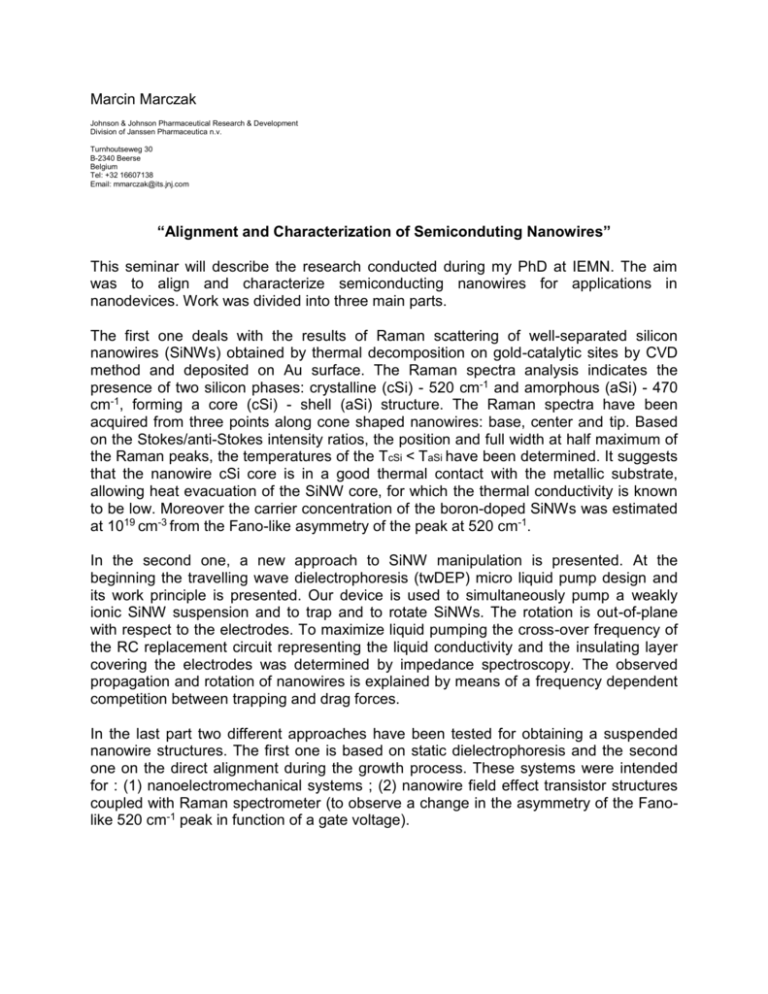
Marcin Marczak Johnson & Johnson Pharmaceutical Research & Development Division of Janssen Pharmaceutica n.v. Turnhoutseweg 30 B-2340 Beerse Belgium Tel: +32 16607138 Email: mmarczak@its.jnj.com “Alignment and Characterization of Semiconduting Nanowires” This seminar will describe the research conducted during my PhD at IEMN. The aim was to align and characterize semiconducting nanowires for applications in nanodevices. Work was divided into three main parts. The first one deals with the results of Raman scattering of well-separated silicon nanowires (SiNWs) obtained by thermal decomposition on gold-catalytic sites by CVD method and deposited on Au surface. The Raman spectra analysis indicates the presence of two silicon phases: crystalline (cSi) - 520 cm-1 and amorphous (aSi) - 470 cm-1, forming a core (cSi) - shell (aSi) structure. The Raman spectra have been acquired from three points along cone shaped nanowires: base, center and tip. Based on the Stokes/anti-Stokes intensity ratios, the position and full width at half maximum of the Raman peaks, the temperatures of the TcSi < TaSi have been determined. It suggests that the nanowire cSi core is in a good thermal contact with the metallic substrate, allowing heat evacuation of the SiNW core, for which the thermal conductivity is known to be low. Moreover the carrier concentration of the boron-doped SiNWs was estimated at 1019 cm-3 from the Fano-like asymmetry of the peak at 520 cm-1. In the second one, a new approach to SiNW manipulation is presented. At the beginning the travelling wave dielectrophoresis (twDEP) micro liquid pump design and its work principle is presented. Our device is used to simultaneously pump a weakly ionic SiNW suspension and to trap and to rotate SiNWs. The rotation is out-of-plane with respect to the electrodes. To maximize liquid pumping the cross-over frequency of the RC replacement circuit representing the liquid conductivity and the insulating layer covering the electrodes was determined by impedance spectroscopy. The observed propagation and rotation of nanowires is explained by means of a frequency dependent competition between trapping and drag forces. In the last part two different approaches have been tested for obtaining a suspended nanowire structures. The first one is based on static dielectrophoresis and the second one on the direct alignment during the growth process. These systems were intended for : (1) nanoelectromechanical systems ; (2) nanowire field effect transistor structures coupled with Raman spectrometer (to observe a change in the asymmetry of the Fanolike 520 cm-1 peak in function of a gate voltage).


